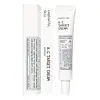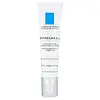What's inside
What's inside
 Key Ingredients
Key Ingredients

 Benefits
Benefits

 Concerns
Concerns

 Ingredients Side-by-side
Ingredients Side-by-side

Water
Skin ConditioningGlycerin
HumectantButylene Glycol
HumectantPropanediol
SolventCyclopentasiloxane
EmollientHelianthus Annuus Seed Oil
EmollientGlyceryl Acrylate/Acrylic Acid Copolymer
HumectantSodium Polyacrylate
AbsorbentXylitol
HumectantCaprylic Acid
CleansingGlyceryl Stearate
EmollientDimethicone
EmollientPanthenol
Skin ConditioningSodium Hyaluronate
HumectantCaprylyl Glycol
EmollientParfum
MaskingPentasodium Tetracarboxymethyl Heptadecanoyl Dipeptide-12
AntiseborrhoeicWater, Glycerin, Butylene Glycol, Propanediol, Cyclopentasiloxane, Helianthus Annuus Seed Oil, Glyceryl Acrylate/Acrylic Acid Copolymer, Sodium Polyacrylate, Xylitol, Caprylic Acid, Glyceryl Stearate, Dimethicone, Panthenol, Sodium Hyaluronate, Caprylyl Glycol, Parfum, Pentasodium Tetracarboxymethyl Heptadecanoyl Dipeptide-12
Water
Skin ConditioningCyclohexasiloxane
EmollientIsononyl Isononanoate
EmollientPropylene Glycol
HumectantIsohexadecane
EmollientNiacinamide
SmoothingPEG-100 Stearate
Glyceryl Stearate
EmollientCetyl Alcohol
EmollientArgilla
AbrasiveCarbomer
Emulsion StabilisingSodium Hydroxide
BufferingCapryloyl Glycine
CleansingCapryloyl Salicylic Acid
ExfoliatingCitric Acid
BufferingXanthan Gum
EmulsifyingAcrylates Copolymer
Salicylic Acid
MaskingIodopropynyl Butylcarbamate
PreservativeChlorhexidine Digluconate
AntimicrobialPiroctone Olamine
PreservativeParfum
MaskingWater, Cyclohexasiloxane, Isononyl Isononanoate, Propylene Glycol, Isohexadecane, Niacinamide, PEG-100 Stearate, Glyceryl Stearate, Cetyl Alcohol, Argilla, Carbomer, Sodium Hydroxide, Capryloyl Glycine, Capryloyl Salicylic Acid, Citric Acid, Xanthan Gum, Acrylates Copolymer, Salicylic Acid, Iodopropynyl Butylcarbamate, Chlorhexidine Digluconate, Piroctone Olamine, Parfum
 Reviews
Reviews

Ingredients Explained
These ingredients are found in both products.
Ingredients higher up in an ingredient list are typically present in a larger amount.
Glyceryl Stearate is a mix of glycerin and stearic acid.
It is used to stabilize the mixing of water and oil ingredients. By preventing these ingredients from separating, it can help elongate shelf life. It can also help thicken the product's texture.
As an emollient, it helps soften skin and supports barrier-replenishing ingredients.
In cosmetics, Glyceryl Stearate is often made from vegetable oils or synthetically produced.
This ingredient may not be fungal-acne safe
Fun fact: The human body also creates Glyceryl Stearate naturally.
Learn more about Glyceryl StearateParfum is a catch-all term for an ingredient or more that is used to give a scent to products.
Also called "fragrance", this ingredient can be a blend of hundreds of chemicals or plant oils. This means every product with "fragrance" or "parfum" in the ingredients list is a different mixture.
For instance, Habanolide is a proprietary trade name for a specific aroma chemical. When used as a fragrance ingredient in cosmetics, most aroma chemicals fall under the broad labeling category of “FRAGRANCE” or “PARFUM” according to EU and US regulations.
The term 'parfum' or 'fragrance' is not regulated in many countries. In many cases, it is up to the brand to define this term.
For instance, many brands choose to label themselves as "fragrance-free" because they are not using synthetic fragrances. However, their products may still contain ingredients such as essential oils that are considered a fragrance by INCI standards.
One example is Calendula flower extract. Calendula is an essential oil that still imparts a scent or 'fragrance'.
Depending on the blend, the ingredients in the mixture can cause allergies and sensitivities on the skin. Some ingredients that are known EU allergens include linalool and citronellol.
Parfum can also be used to mask or cover an unpleasant scent.
The bottom line is: not all fragrances/parfum/ingredients are created equally. If you are worried about fragrances, we recommend taking a closer look at an ingredient. And of course, we always recommend speaking with a professional.
Learn more about ParfumWater. It's the most common cosmetic ingredient of all. You'll usually see it at the top of ingredient lists, meaning that it makes up the largest part of the product.
So why is it so popular? Water most often acts as a solvent - this means that it helps dissolve other ingredients into the formulation.
You'll also recognize water as that liquid we all need to stay alive. If you see this, drink a glass of water. Stay hydrated!
Learn more about Water